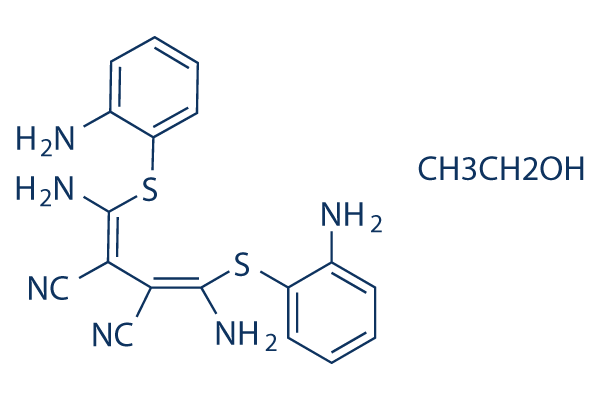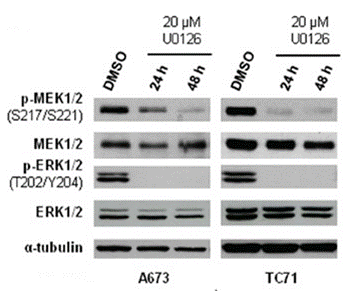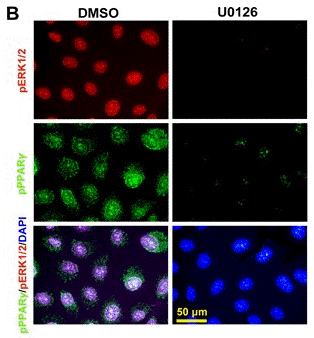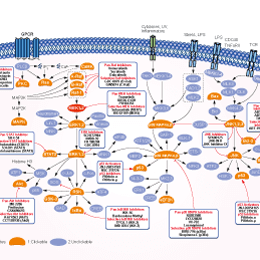
- 阻害剤
- 研究分野別
- PI3K/Akt/mTOR
- Epigenetics
- Methylation
- Immunology & Inflammation
- Protein Tyrosine Kinase
- Angiogenesis
- Apoptosis
- Autophagy
- ER stress & UPR
- JAK/STAT
- MAPK
- Cytoskeletal Signaling
- Cell Cycle
- TGF-beta/Smad
- 化合物ライブラリー
- Popular Compound Libraries
- Customize Library
- Clinical and FDA-approved Related
- Bioactive Compound Libraries
- Inhibitor Related
- Natural Product Related
- Metabolism Related
- Cell Death Related
- By Signaling Pathway
- By Disease
- Anti-infection and Antiviral Related
- Neuronal and Immunology Related
- Fragment and Covalent Related
- FDA-approved Drug Library
- FDA-approved & Passed Phase I Drug Library
- Preclinical/Clinical Compound Library
- Bioactive Compound Library-I
- Bioactive Compound Library-II
- Kinase Inhibitor Library
- Express-Pick Library
- Natural Product Library
- Human Endogenous Metabolite Compound Library
- Alkaloid Compound LibraryNew
- Angiogenesis Related compound Library
- Anti-Aging Compound Library
- Anti-alzheimer Disease Compound Library
- Antibiotics compound Library
- Anti-cancer Compound Library
- Anti-cancer Compound Library-Ⅱ
- Anti-cancer Metabolism Compound Library
- Anti-Cardiovascular Disease Compound Library
- Anti-diabetic Compound Library
- Anti-infection Compound Library
- Antioxidant Compound Library
- Anti-parasitic Compound Library
- Antiviral Compound Library
- Apoptosis Compound Library
- Autophagy Compound Library
- Calcium Channel Blocker LibraryNew
- Cambridge Cancer Compound Library
- Carbohydrate Metabolism Compound LibraryNew
- Cell Cycle compound library
- CNS-Penetrant Compound Library
- Covalent Inhibitor Library
- Cytokine Inhibitor LibraryNew
- Cytoskeletal Signaling Pathway Compound Library
- DNA Damage/DNA Repair compound Library
- Drug-like Compound Library
- Endoplasmic Reticulum Stress Compound Library
- Epigenetics Compound Library
- Exosome Secretion Related Compound LibraryNew
- FDA-approved Anticancer Drug LibraryNew
- Ferroptosis Compound Library
- Flavonoid Compound Library
- Fragment Library
- Glutamine Metabolism Compound Library
- Glycolysis Compound Library
- GPCR Compound Library
- Gut Microbial Metabolite Library
- HIF-1 Signaling Pathway Compound Library
- Highly Selective Inhibitor Library
- Histone modification compound library
- HTS Library for Drug Discovery
- Human Hormone Related Compound LibraryNew
- Human Transcription Factor Compound LibraryNew
- Immunology/Inflammation Compound Library
- Inhibitor Library
- Ion Channel Ligand Library
- JAK/STAT compound library
- Lipid Metabolism Compound LibraryNew
- Macrocyclic Compound Library
- MAPK Inhibitor Library
- Medicine Food Homology Compound Library
- Metabolism Compound Library
- Methylation Compound Library
- Mouse Metabolite Compound LibraryNew
- Natural Organic Compound Library
- Neuronal Signaling Compound Library
- NF-κB Signaling Compound Library
- Nucleoside Analogue Library
- Obesity Compound Library
- Oxidative Stress Compound LibraryNew
- Phenotypic Screening Library
- PI3K/Akt Inhibitor Library
- Protease Inhibitor Library
- Protein-protein Interaction Inhibitor Library
- Pyroptosis Compound Library
- Small Molecule Immuno-Oncology Compound Library
- Mitochondria-Targeted Compound LibraryNew
- Stem Cell Differentiation Compound LibraryNew
- Stem Cell Signaling Compound Library
- Natural Phenol Compound LibraryNew
- Natural Terpenoid Compound LibraryNew
- TGF-beta/Smad compound library
- Traditional Chinese Medicine Library
- Tyrosine Kinase Inhibitor Library
- Ubiquitination Compound Library
-
Cherry Picking
You can personalize your library with chemicals from within Selleck's inventory. Build the right library for your research endeavors by choosing from compounds in all of our available libraries.
Please contact us at info@selleck.co.jp to customize your library.
You could select:
- 抗体
- 新製品
- お問い合わせ
U0126-EtOH
U0126-EtOH is a highly selective inhibitor of MEK1/2 with IC50 of 0.07 μM/0.06 μM in cell-free assays, 100-fold higher affinity for ΔN3-S218E/S222D MEK than PD98059. U0126 inhibits autophagy and mitophagy with antiviral activity.

CAS No. 1173097-76-1
文献中Selleckの製品使用例(786)
製品安全説明書
現在のバッチを見る:
純度:
99.98%
99.98
U0126-EtOHと併用されることが多い化合物
It and SP600125 reverse several genes upregulation in RAW264.7 and Ana-1 cells caused by Echinococcus multilocularis soluble antigen.
It and Adezmapimod ameliorate indoxyl sulfate-induced inhibitory effects and reductions in Kv4.2, Kv4.3, and KChIP2 proteins and genes.
In the presence of Purmorphamine, it inhibits sonic hedgehog-induced levels of p-ERK1/2 in RA-FLSs.
U0126-EtOH関連製品
シグナル伝達経路
MEK阻害剤の選択性比較
Cell Data
| Cell Lines | Assay Type | Concentration | Incubation Time | 活性情報 | PMID |
|---|---|---|---|---|---|
| rat PC12 cells | Function assay | 10 μM | 1 h | Activation of Nrf2/ARE in rat PC12 cells assessed as HO-1 protein induction at 10 uM after 5 hrs pretreated with JNK inhibitor SP600125 for 1 hr before compound addition by Western blot analysis | 21345685 |
| mouse RAS-3T3 cells | Function assay | 10-40 μM | Inhibition of MEK-mediated ERK1/2 phosphorylation in mouse RAS-3T3 cells at 10 to 40 uM by ELISA. | 24507826 | |
| HCT116 cells | Function assay | Ability of compound to inhibit anchorage independent colony formation (soft agar growth assay) in HCT116 cells, IC50=19.4 μM. | 15225706 | ||
| COS-7 cells | Function assay | Inhibitory concentration against AP-1 transcription in COS-7 cells, IC50=1 μM. | 15006386 | ||
| HeLa cells | Function assay | Inhibition of EGF-stimulated Elk1-luciferase reporter assay in HeLa cells, IC50=0.29 μM. | 15225706 | ||
| 他の多くの細胞株試験データをご覧になる場合はこちらをクリックして下さい | |||||
生物活性
| 製品説明 | U0126-EtOH is a highly selective inhibitor of MEK1/2 with IC50 of 0.07 μM/0.06 μM in cell-free assays, 100-fold higher affinity for ΔN3-S218E/S222D MEK than PD98059. U0126 inhibits autophagy and mitophagy with antiviral activity. | ||||
|---|---|---|---|---|---|
| 特性 | A chemically synthesized and highly selective inhibitor of both MEK1 and MEK2. | ||||
| Targets |
|
| In Vitro | ||||
| In vitro |
U0126-EtOH functionally antagonizes AP- 1 transcriptional activity and blocks the production of a variety of cytokines and metalloproteinases involved in the inflammatory response. [1] This compound inhibits T cell proliferation in response to antigenic stimulation or cross-linked anti-CD3 plus anti-CD28 Abs without effect on IL-2-induced proliferation by down-regulating IL-2 mRNA levels. [2] A recent study shows that this chemical antagonizes resveratrol-induced apoptosis in castration-resistant human prostate cancer C4-2 cells, inhibits mitochondrial function and shifts cells to aerobic glycolysis independently of MEK. [3] |
|||
|---|---|---|---|---|
| Kinase Assay | In Vitro Kinase Assays | |||
| The amount of immunoprecipitated wild type MEK used in these assays is adjusted to give a similar amount of activity units as obtained with 10 nM recombinant MEK. Reaction velocities are measured using a 96-well nitrocellulose filter apparatus as described below. Unless otherwise noted, reactions are carried out at an enzyme concentration of 10 nM, in 20 mM Hepes, 10 mM MgCl2, 5 mM β-mercaptoethanol, 0.1 mg/mL BSA, pH 7.4, at room temperature. Reactions are initiated by the addition of [γ-33P]ATP into the premixed MEK/ERK/this compound reaction mixture, and an aliquot of 100 μL is taken every 6 minutes and transferred to the 96-well nitrocellulose membrane plate which has 50 mM EDTA to stop the reaction. The membrane plate is drawn and washed 4 times with buffer under vacuum. Wells are then filled with 30 μL of Microscint-20 scintillation fluid, and the radioactivity of 33P-phosphorylated ERK is counted with a Top Count scintillation counter. Velocities are obtained from the slopes of radioactivity versus time plots. Concentrations of ERK and ATP are 400 nM and 40 μM, respectively, unless otherwise indicated. For all of the in vitro enzyme assays, the percent inhibition is calculated 100 (1 −Vi/Vo) where Vi and Vo are the initial reaction velocities in the presence and absence of this chemical, respectively. The data are then plotted as percent inhibition as a function of this compound concentration and fit, by nonlinear least squares regression, to the standard equation for a Langmuir isotherm to determine the IC50. As reported, enzyme concentrations are based upon molecular weights and mass of protein used in the final assay volume and not on active site titration. Thus, the actual enzyme active site concentration may differ from that reported. | ||||
| 細胞実験 | 細胞株 | A.E7 or Th17 cells | ||
| 濃度 | 0 to 10 μM | |||
| 反応時間 | 48 hours | |||
| 実験の流れ | A.E7 or Th17 cells are incubated with C-treated B10.BR or BALB/c splenocytes plus varying concentrations of pigeon cytochrome c or PR8 Ag, or with 5 U/mL human rIL-2. In addition, some assays contains U0126-EtOH or an inactive analogue, U0124, to determine direct effects of MEK inhibition on T cell proliferation. Two days after culture initiation, each well is pulsed with 1 µCi of [3H]TdR and harvested the following day. The incorporation of [3H]TdR into DNA is quantitated on a Packard Matrix 96 direct beta counter without the use of liquid scintillation mixtures. |
|||
| 実験結果図 | Methods | Biomarkers | 結果図 | PMID |
| Western blot | p-MEK / MEK / p-ERK / ERK E-cadherin / Vimentin / Twist-2 |

|
27487136 | |
| Immunofluorescence | pERK / pPPARγ E-cadherin / Vimentin CD40 |

|
27145370 | |
| In Vivo | ||
| In Vivo |
U0126-EtOH, as the inhibitor of intracellular Raf/MEK/ERK signaling pathway, demonstrates antiviral activity by suppressing propagation of the 2009 pandemic IV H1N1 variant and highly pathogenic avian influenza viruses (HPAIV) in vivo in the mouse lung by inhibiting. [4] This compound shows the potential neuroprotective effect and improving spatial learning in Morris water maze (MWM) by activating peroxisome proliferator-activated receptor gamma coactivator-1a, nuclear respiratory factor 1, and mitochondrial transcription factor A in Aβ-injected rats. [5] |
|
|---|---|---|
| 動物実験 | 動物モデル | Female C57Bl/6 mice infected by Mouse-adapted highly pathogenic avian influenza A/FPV/Bratislava/79 (H7N7; FPV) virus and swine origin human influenza A virus (SOIV) A/Regensburg/D6/2009 (H1N1v; RB1). |
| 投与量 | ≤10 mM | |
| 投与経路 | Administered via aerosol. | |
|
化学情報
| 分子量 | 426.56 | 化学式 | C18H16N6S2.C2H6O |
| CAS No. | 1173097-76-1 | SDF | Download U0126-EtOH SDFをダウンロードする |
| Smiles | CCO.C1=CC=C(C(=C1)N)SC(=C(C#N)C(=C(N)SC2=CC=CC=C2N)C#N)N | ||
| 保管 | |||
|
In vitro |
DMSO : 85 mg/mL ( (199.26 mM); 吸湿したDMSOは溶解度を減少させます。新しいDMSOをご使用ください。) Water : Insoluble Ethanol : Insoluble |
モル濃度計算器 |
|
in vivo Add solvents to the product individually and in order. |
投与溶液組成計算機 | |||||
実験計算
投与溶液組成計算機(クリア溶液)
ステップ1:実験データを入力してください。(実験操作によるロスを考慮し、動物数を1匹分多くして計算・調製することを推奨します)
mg/kg
g
μL
匹
ステップ2:投与溶媒の組成を入力してください。(ロット毎に適した溶解組成が異なる場合があります。詳細については弊社までお問い合わせください)
% DMSO
%
% Tween 80
% ddH2O
%DMSO
%
計算結果:
投与溶媒濃度: mg/ml;
DMSOストック溶液調製方法: mg 試薬を μL DMSOに溶解する(濃度 mg/mL, 注:濃度が当該ロットのDMSO溶解度を超える場合はご連絡ください。 )
投与溶媒調製方法:Take μL DMSOストック溶液に μL PEG300,を加え、完全溶解後μL Tween 80,を加えて完全溶解させた後 μL ddH2O,を加え完全に溶解させます。
投与溶媒調製方法:μL DMSOストック溶液に μL Corn oil,を加え、完全溶解。
注意:1.ストック溶液に沈殿、混濁などがないことをご確認ください;
2.順番通りに溶剤を加えてください。次のステップに進む前に溶液に沈殿、混濁などがないことを確認してから加えてください。ボルテックス、ソニケーション、水浴加熱など物理的な方法で溶解を早めることは可能です。
技術サポート
ストックの作り方、阻害剤の保管方法、細胞実験や動物実験の際に注意すべき点など、製品を取扱う時に問い合わせが多かった質問に対しては取扱説明書でお答えしています。
他に質問がある場合は、お気軽にお問い合わせください。
* 必須
よくある質問(FAQ)
質問1:
I want to know whether it is light-sensitive?
回答
It is not stable. It should be stored as powder at -20°C, and prepared the solution just before use.

